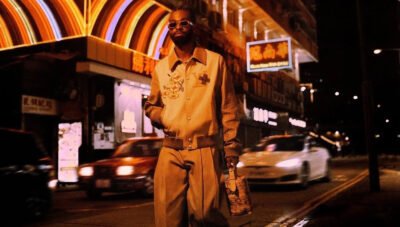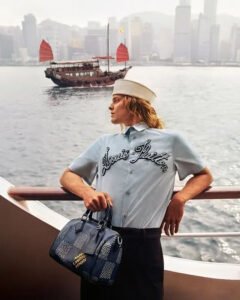Louis Vuitton has always maintained its classic brand image, and the price is never discounted, allowing it to maintain its consistent noble texture. And each bag is hand sewn, and each customer can only buy one when purchasing. There is strict control over the quantity to prevent monopoly on speculation.
There are many legendary stories about Louis Vuitton, but no matter what kind of product Louis Vuitton has, people can fully expect its quality.
Louis Vuitton aims to create this unparalleled quality and stunning effect, which, at a glance, leaves people trapped and unable to extricate themselves.
For example, its luggage is mostly plain, durable, convenient, and lightweight because it needs to be combined with travel.
Its fashion is surprisingly luxurious, with a love for golden colors to highlight its grandeur and bold personality.
The bold and unrestrained use of colors in clothes is a characteristic of Louis Vuitton, and the most impressive feature is his beautiful and moving floral patterns, which are hailed as classics in the fashion industry.
In 1997, Marc Jacobs, a 34 year old New York designer, was invited to join Louis Vuitton as the artistic director of the group and served as the designer for Louis Vuitton’s men’s and women’s clothing and men’s and women’s leather shoes. Mark Jacobs has won the CFDA Annual Award for Women’s Fashion Design in the United States. Since joining Louis Vuitton, he has designed a series of new products ranging from handbags, fashion, jewelry to textiles and footwear, earning the Louis Vuitton logo a wider reputation.
In 1998, the FIFA World Cup was held in France, and Louis Vuitton specially designed a limited edition football with the classic “Monogram” pattern to complement this eye-catching event. This football is equipped with exquisite leather bags, resembling handbags, with a global circulation of only 3000 and printed with numbers. As a result, the product was sold out within a week after its launch.
In 1999, Louis Vuitton continued the spirit of the World Cup by launching a photography collection called “Rebonds” to raise funds for the United Nations Children’s Fund.
From its inception until now, Louis Vuitton’s craze has continued. Louis Vuitton is one of the brands that cannot forget its fashion status. From political and business elites to white-collar workers around the world, they are loyal to this brand. In addition to falling in love with Louis Vuitton’s luxurious status, loving it always withstands the test of time.
In 1821, Louis Vuitton was born into a carpenter family in a rural France. At the age of 14, he walked 400 kilometers on foot to Paris to seek apprenticeship and skills, and later became a professional technician who took care of luggage for royal nobles on trips. Starting from being a bundle worker, he specialized in wrapping luggage for nobles. Due to his exquisite craftsmanship, his reputation quickly spread to the upper class.
In 1854, founder Louis Vuitton opened the first suitcase store named after himself in Paris. A century later, Louis Vuitton became one of the top brands in the field of suitcases and leather goods, and became a symbol of high society. The Louis Vuitton brand is no longer limited to designing and selling high-end leather goods and bags, but has become a giant trend indicator in the fields of fashion, accessories, leather shoes, bags, jewelry, watches, media, famous wines, and more.
In 1885, Louis Vuitton opened its first overseas branch on Oxford Street in central London. Since then, this brand has never ceased its innovation and expansion.
In 1892, Louis Vuitton passed away, and his son George Vuitton inherited his father’s business.
In 1896, George Vuitton designed a still popular letter combination pattern. The Louis Vuitton letters, four petal flowers, and diamond shaped flower series on the surface of his leather goods have become symbolic symbols of the Louis Vuitton brand. Even in today’s diversified development of Louis Vuitton products, it still holds a unique and irreplaceable historical position.
In 1987, Louis Vuitton merged with another luxury goods group in France, Moet Hennessy, to form the Louis Vuitton MH (LV MH) group, which subsequently acquired other famous brands such as Givenchy. Louis Vuitton MH Group is already the world’s largest luxury goods group and has opened direct branches in major cities around the world.












